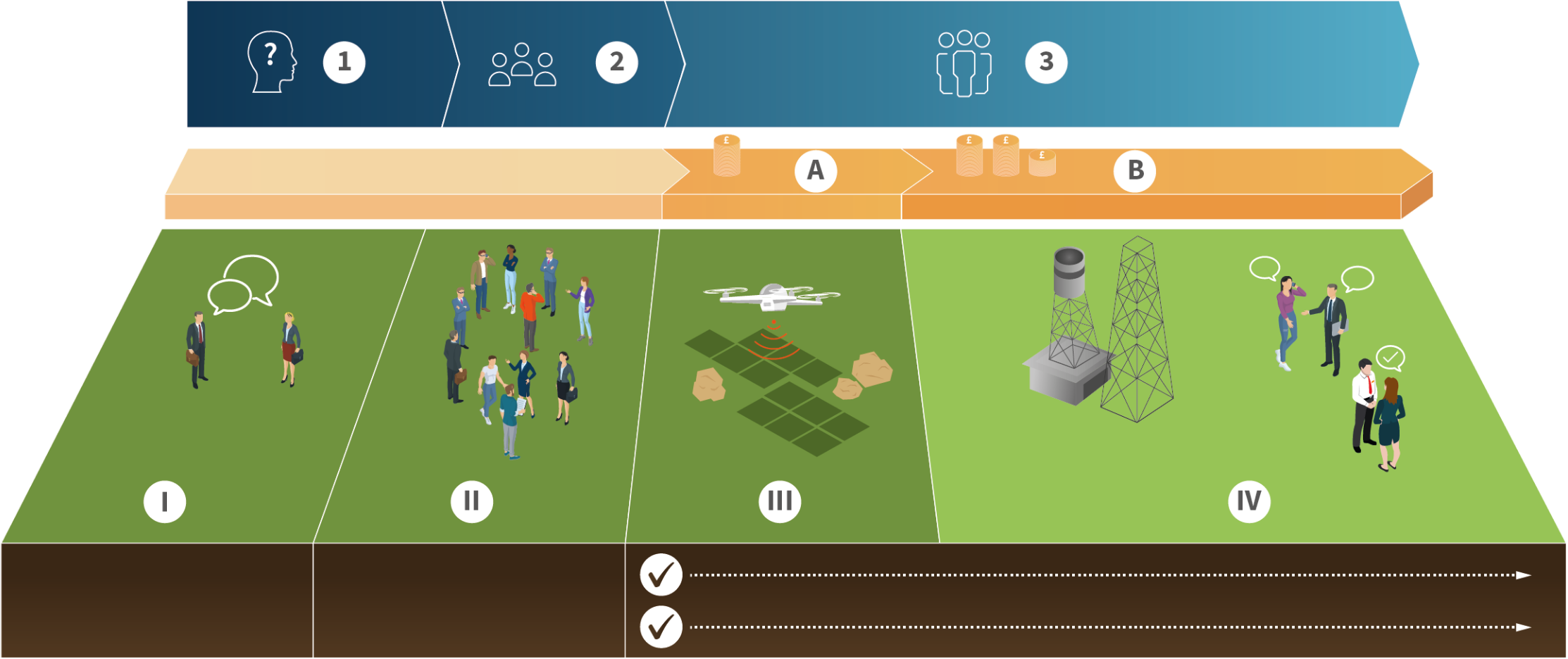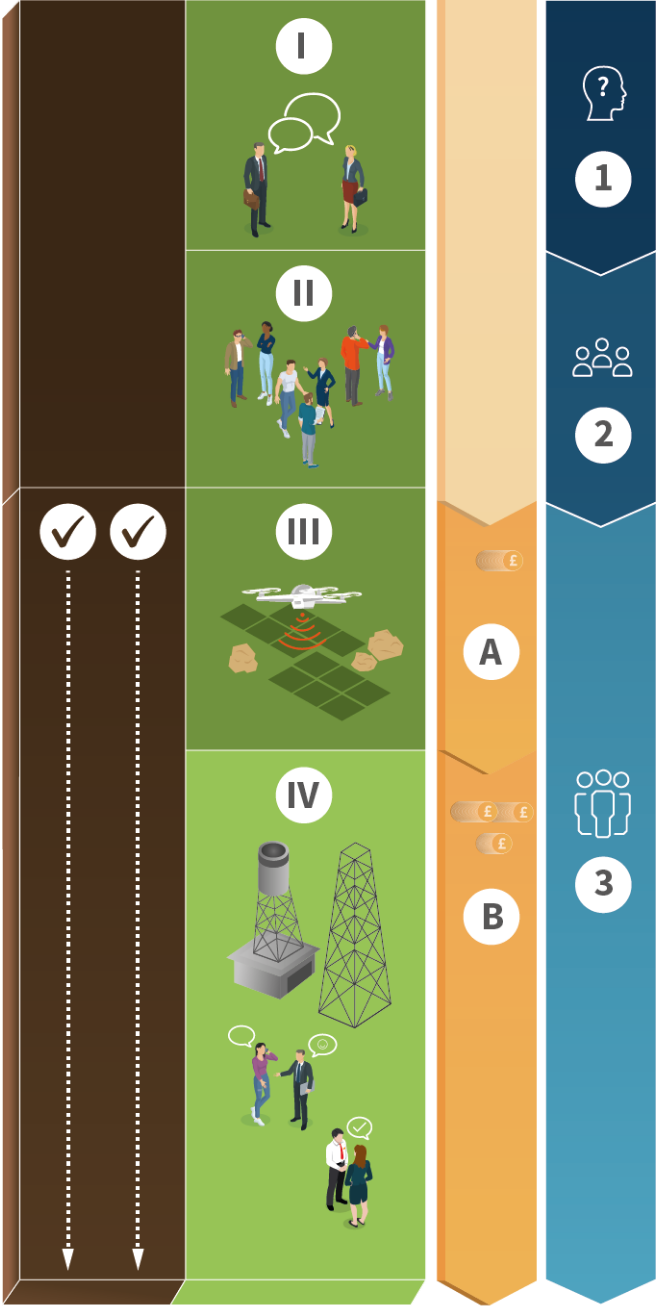The aim of the Mid Copeland GDF Community Partnership is to share information, discuss concerns and find answers to questions its community has about all aspects of the Geological Disposal Facility (GDF) siting process, including what hosting a GDF could mean and how its community could benefit.
From our Chair Andy Pratt:
Welcome to the website where you’ll find information and news, as well as details around Community Investment Funding and how you can get involved.
The website is continuing to grow as the Community Partnership evolves and can be used to access lots of useful information about what GDF is, how the Community Partnership works, when our latest events are and how you can get in touch.
We can set up a meeting with you, attend your event, or give a presentation on the work we do – so please make contact.
No decisions have been made about where a GDF would be located. Mid Copeland (which covers the electoral ward of Gosforth and includes Seascale, Gosforth, Beckermet, Calderbridge, Haile, Thornhill, Nethertown and Braystones) is one of the areas being considered. The Lake District National Park is excluded from consideration.
A Geological Disposal Facility, or GDF, is an underground facility designed to safely and securely dispose of our radioactive waste – specifically ‘higher-activity’ waste (the most radioactive kind).
It involves building a series of specially designed and engineered vaults and tunnels deep underground. It could potentially be three times deeper than the height of the Shard in London, Britain’s tallest building.
Once the waste is placed inside a GDF, the facility will eventually be permanently sealed. The way the facility is designed and engineered means it can be sealed to protect people and the environment for hundreds of thousands of years, without needing any maintenance, while the radioactivity fades away naturally.
Scientists and other authorities all over the world agree that a GDF is the safest way to deal with ‘higher-activity’ radioactive waste (the most radioactive kind) for the long term. This international consensus comes after decades of scientific research.
The Office for Nuclear Regulation and the Environment Agency will review the designs for a GDF, the proposed site, and the science that informs them, to make sure it protects people and the environment. A GDF will only be built if it can be shown to be safe for both people and the environment. As soon as construction starts on a GDF, the site will have to meet strict safety standards.
The Mid Copeland GDF Community Partnership Search Area includes the electoral ward of Gosforth.
No areas which fall within the Lake District National Park will be considered to host a GDF.
The GDF developer, Nuclear Waste Services (NWS), will identify smaller Areas of Focus in the Search Area as the next step in the process of finding potentially suitable sites.
Further information can be found in the Finding a Suitable Site tab.
A Community Partnership must have at least one relevant principal local authority (such as a district or county council), alongside the developer and members of the community and individuals. The aim is for the membership to be reflective of the local community in the Search Area.
Please see the Mid Copeland Community Partnership.
A Selection Panel have identified additional members for the Community Partnership, based on the types of skills, knowledge and experience that the Community Partnership needs.
The Community Partnership will continue the conversations that the Working Group started, and work to develop a vision for the future of the community and provide answers to people’s questions.
Then much later, when everyone’s had plenty of time to get informed and make up their minds, there will be a Test of Public Support. This will take the form of something like a poll or referendum that lets every voter in the electoral wards around the proposed site have their say about a GDF. Without their support, the project will not go ahead.
A Geological Disposal Facility, or GDF, is an underground facility designed to safely and securely dispose of our radioactive waste – specifically ‘higher-activity’ waste (the most radioactive kind).
It involves building a series of specially designed and engineered vaults and tunnels deep underground. It could potentially be three times deeper than the height of the Shard in London, Britain’s tallest building.
Once the waste is placed inside a GDF, the facility will eventually be permanently sealed. The way the facility is designed and engineered means it can be sealed to protect people and the environment for hundreds of thousands of years, without needing any maintenance, while the radioactivity fades away naturally.
Scientists and other authorities all over the world agree that a GDF is the safest way to deal with ‘higher-activity’ radioactive waste (the most radioactive kind) for the long term. This international consensus comes after decades of scientific research.
The Office for Nuclear Regulation and the Environment Agency will review the designs for a GDF, the proposed site, and the science that informs them, to make sure it protects people and the environment. A GDF will only be built if it can be shown to be safe for both people and the environment. As soon as construction starts on a GDF, the site will have to meet strict safety standards.
The Mid Copeland GDF Community Partnership Search Area includes the electoral ward of Gosforth.
No areas which fall within the Lake District National Park will be considered to host a GDF.
The GDF developer, Nuclear Waste Services (NWS), will identify smaller Areas of Focus in the Search Area as the next step in the process of finding potentially suitable sites.
Further information can be found in the Finding a Suitable Site tab.
A Community Partnership must have at least one relevant principal local authority (such as a district or county council), alongside the developer and members of the community and individuals. The aim is for the membership to be reflective of the local community in the Search Area.
Please see the Mid Copeland Community Partnership.
A Selection Panel have identified additional members for the Community Partnership, based on the types of skills, knowledge and experience that the Community Partnership needs.
The Community Partnership will continue the conversations that the Working Group started, and work to develop a vision for the future of the community and provide answers to people’s questions.
Then much later, when everyone’s had plenty of time to get informed and make up their minds, there will be a Test of Public Support. This will take the form of something like a poll or referendum that lets every voter in the electoral wards around the proposed site have their say about a GDF. Without their support, the project will not go ahead.
This interactive diagram explains more about the GDF siting process.























This interactive diagram explains more about the GDF siting process.























A Programme of Activities is the work that will be carried out by the Community Partnership in order to learn more about a GDF and what this may mean for this community.
Community Investment Funding recognises the long-term nature of the GDF project, and that the benefits associated with jobs, infrastructure and major investment may not materialise until the project has been running for several years. The Mid Copeland community will initially have access to £1 million per year, rising to £2.5 million per year if the project progresses to technical investigations requiring deep boreholes.
The Partnership is primarily here to be the key vehicle for dialogue with the Mid Copeland local community and the GDF developer, in a process that will take several years. We are here to continue the conversation with local people and enable them to find out more, explore the issues, and continue to have their questions answered.
The residents of the area around any proposed GDF site would have the final say on whether they want to host a facility, in what is known as a Test of Public Support, and the Community Partnership will oversee this. The elected local authorities on the Partnership can also withdraw the area at any point in this process, right up until the Test of Public Support.